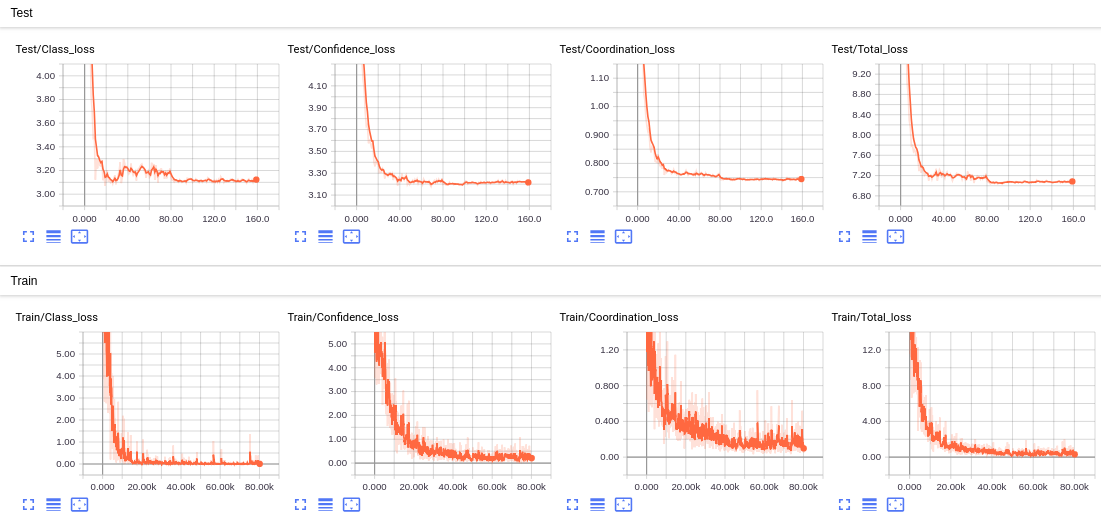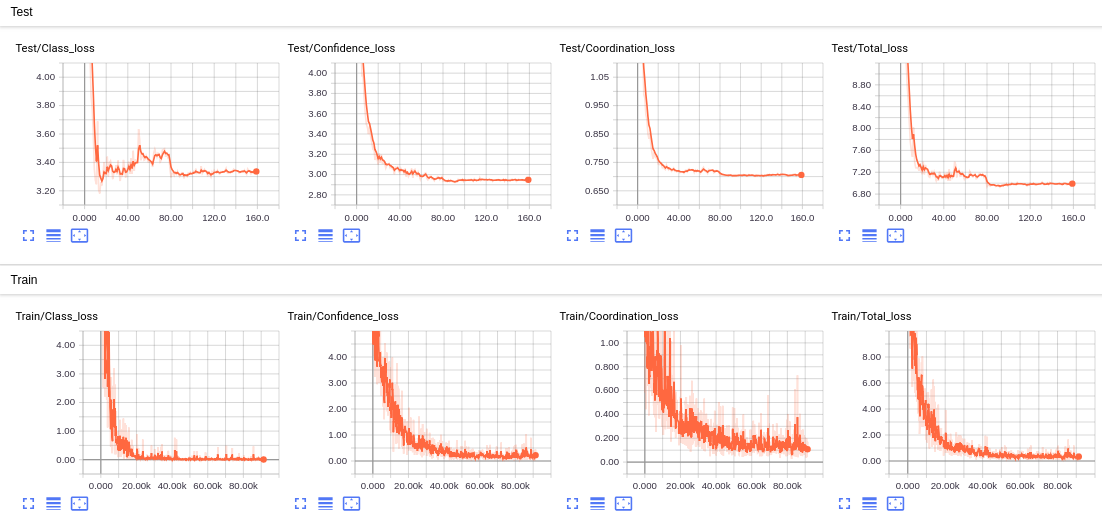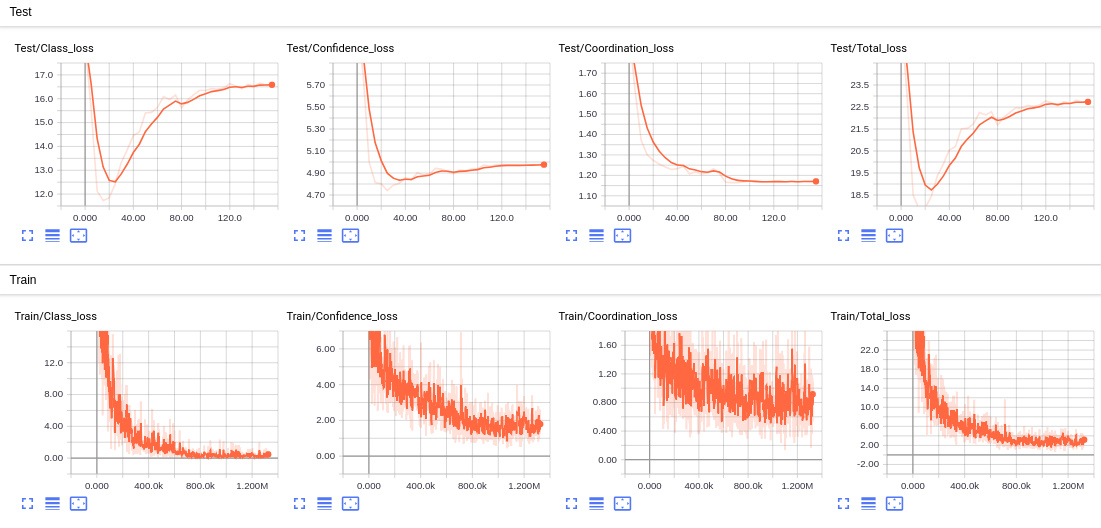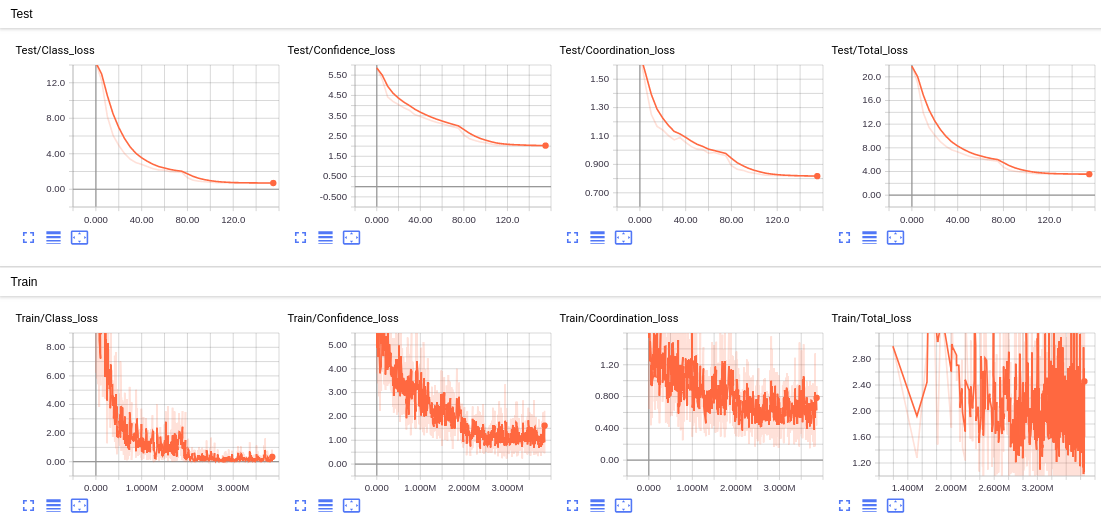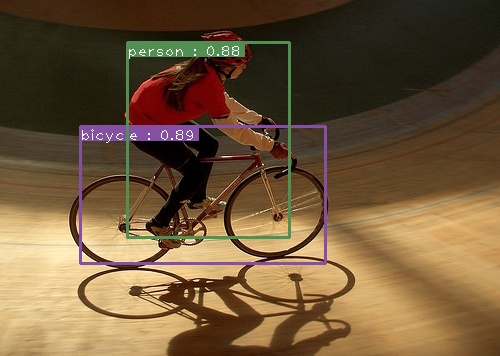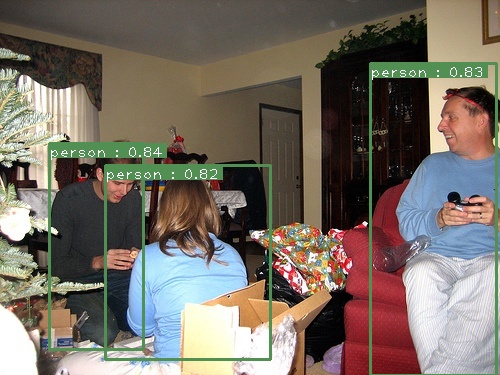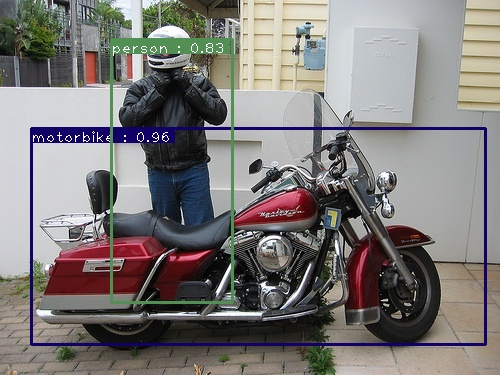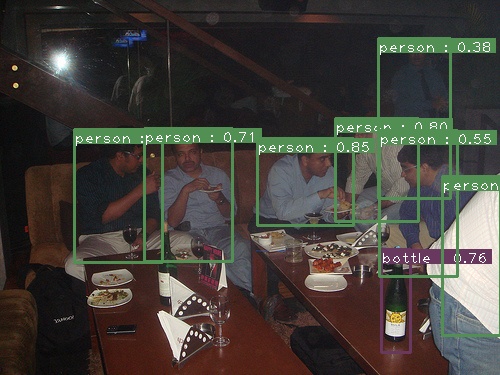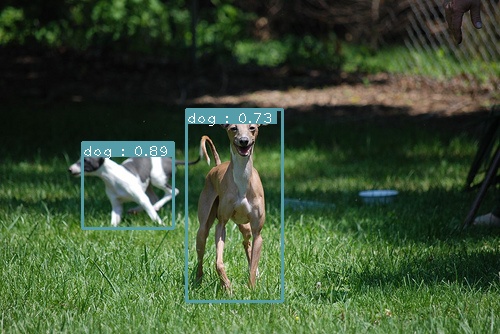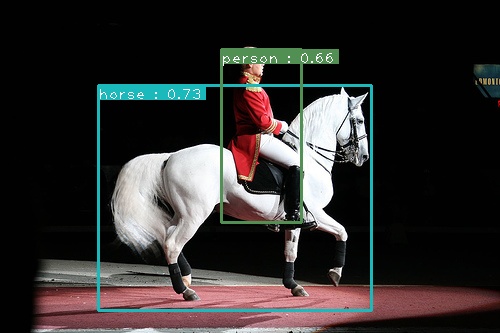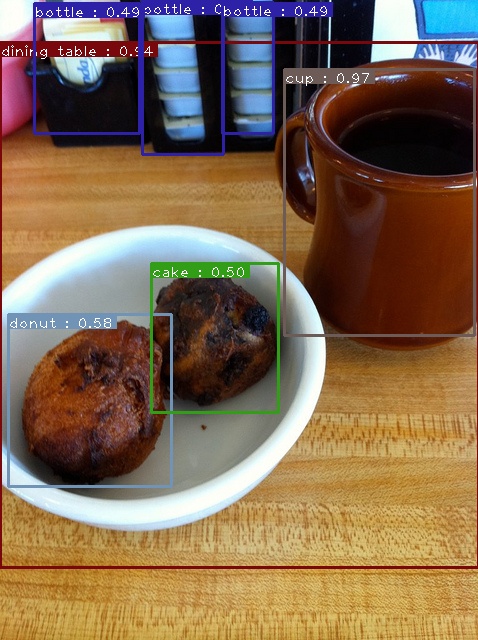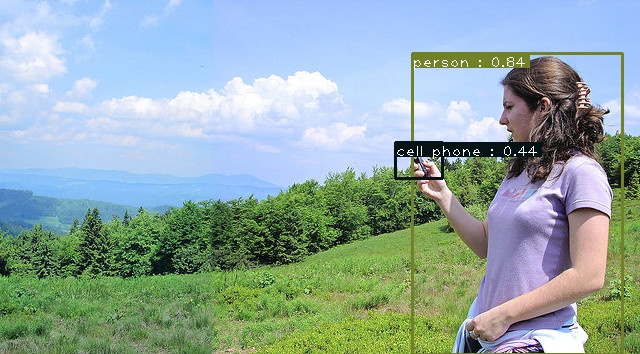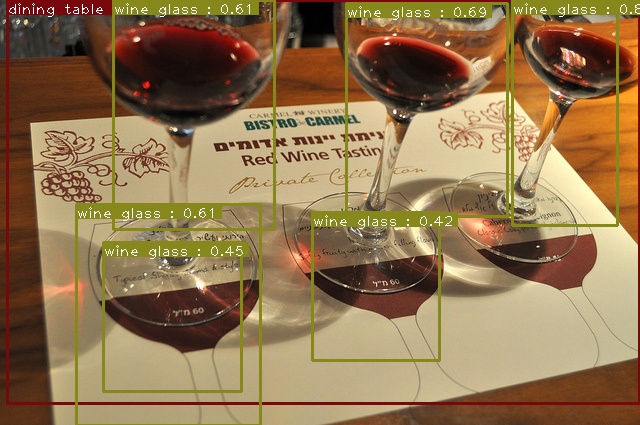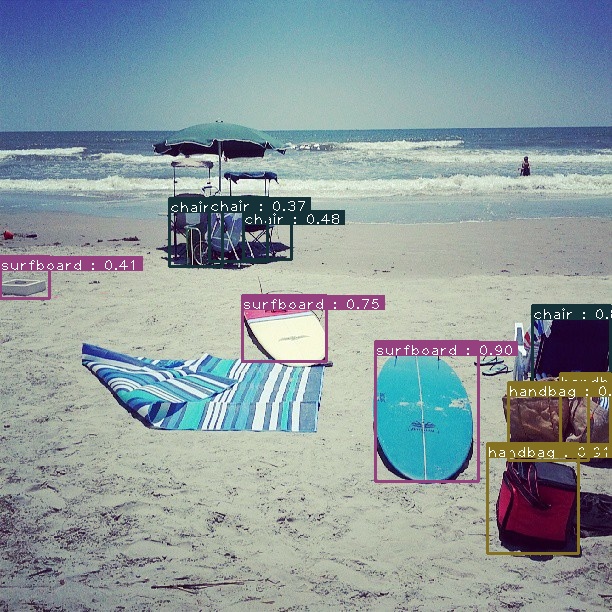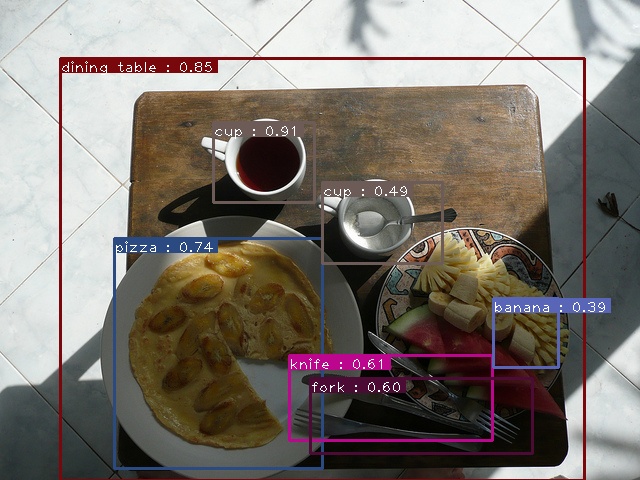- Darknet-19 Training or Finetuning from darknet framework.
- Muti-Scale Training as paper did.
- Data augmentation (the more the better?) or use
VOCaug. - Loss Function debug.
- Focal loss.
- To be state-of-the-art.
| Train Datasets | Test Datasets | Model | mAP | batch size |
|---|---|---|---|---|
| VOC07+12 | VOC07 test | YOLOv2(416x416) paper | 76.8 | |
| VOC2012 | VOC07 test | This(448x448) | 60.21 | |
| VOC0712 | VOC07 test | This(448x448) | 66.77 | 32 |
- Trained Models(Keep updating)
链接: https://pan.baidu.com/s/1L_TdCeQpXOFCy2P2X9sK0w 提取码: m5bw 复制这段内容后打开百度网盘手机App,操作更方便哦
- mAP on VOC2007 test
# Please choose a voc model.
./gen_res.sh trained_models/only_params_trained_yolo_voc.pth
cd utils/
./eval_mAP.sh 0.00
AP for aeroplane = 0.6798
AP for bicycle = 0.7091
AP for bird = 0.6259
AP for boat = 0.4122
AP for bottle = 0.2936
AP for bus = 0.6606
AP for car = 0.7086
AP for cat = 0.7504
AP for chair = 0.4005
AP for cow = 0.6244
AP for diningtable = 0.6042
AP for dog = 0.6797
AP for horse = 0.6767
AP for motorbike = 0.7119
AP for person = 0.6730
AP for pottedplant = 0.3008
AP for sheep = 0.6167
AP for sofa = 0.5366
AP for train = 0.7457
AP for tvmonitor = 0.6315
# Mean AP = 0.6021- Training on voc07+12
Here is my pytorch implementation of the model described in the paper YOLO9000: Better, Faster, Stronger paper.

An example of my model's output.
With my code, you can:
- Train your model from scratch
- Train your model with my trained model
- Evaluate test images with either my trained model or yours
- python 3.6
- pytorch 0.4
- opencv (cv2)
- tensorboard
- tensorboardX (This library could be skipped if you do not use SummaryWriter)
- numpy
I used 4 different datases: VOC2007, VOC2012, COCO2014 and COCO2017. Statistics of datasets I used for experiments is shown below
| Dataset | Classes | #Train images/objects | #Validation images/objects |
|---|---|---|---|
| VOC2007 | 20 | 5011/12608 | 4952/- |
| VOC2012 | 20 | 5717/13609 | 5823/13841 |
| COCO2014 | 80 | 83k/- | 41k/- |
| COCO2017 | 80 | 118k/- | 5k/- |
Create a data folder under the repository,
cd {repo_root}
mkdir data
-
VOC: Download the voc images and annotations from VOC2007 or VOC2012. Make sure to put the files as the following structure:
VOCDevkit ├── VOC2007 │ ├── Annotations │ ├── ImageSets │ ├── JPEGImages │ └── ... └── VOC2012 ├── Annotations ├── ImageSets ├── JPEGImages └── ... -
COCO: Download the coco images and annotations from coco website. Make sure to put the files as the following structure:
COCO ├── annotations │ ├── instances_train2014.json │ ├── instances_train2017.json │ ├── instances_val2014.json │ └── instances_val2017.json │── images │ ├── train2014 │ ├── train2017 │ ├── val2014 │ └── val2017 └── anno_pickle ├── COCO_train2014.pkl ├── COCO_val2014.pkl ├── COCO_train2017.pkl └── COCO_val2017.pkl
- Model structure: In compared to the paper, I changed structure of top layers, to make it converge better. You could see the detail of my YoloNet in src/yolo_net.py.
- Data augmentation: I performed dataset augmentation, to make sure that you could re-trained my model with small dataset (~500 images). Techniques applied here includes HSV adjustment, crop, resize and flip with random probabilities
- Loss: The losses for object and non-objects are combined into a single loss in my implementation
- Optimizer: I used SGD optimizer and my learning rate schedule is as follows:
| Epoches | Learning rate |
|---|---|
| 0-4 | 1e-5 |
| 5-79 | 1e-4 |
| 80-109 | 1e-5 |
| 110-end | 1e-6 |
- In my implementation, in every epoch, the model is saved only when its loss is the lowest one so far. You could also use early stopping, which could be triggered by specifying a positive integer value for parameter es_patience, to stop training process when validation loss has not been improved for es_patience epoches.
You could find all trained models I have trained in YOLO trained models
For each dataset, I provide 2 different pre-trained models, which I trained with corresresponding dataset:
- whole_model_trained_yolo_xxx: The whole trained model.
- only_params_trained_yolo_xxx: The trained parameters only.
You could specify which trained model file you want to use, by the parameter pre_trained_model_type. The parameter pre_trained_model_path then is the path to that file.
If you want to train a model with a VOC dataset, you could run:
- python3 train_voc.py --year year: For example, python3 train_voc.py --year 2012
If you want to train a model with a COCO dataset, you could run:
- python3 train_coco.py --year year: For example, python3 train_coco.py --year 2014
If you want to train a model with both COCO datasets (training set = train2014 + val2014 + train2017, val set = val2017), you could run:
- python3 train_coco_all.py
For each type of dataset (VOC or COCO), I provide 3 different test scripts:
If you want to test a trained model with a standard VOC dataset, you could run:
- python3 test_xxx_dataset.py --year year: For example, python3 test_coco_dataset.py --year 2014
If you want to test a model with some images, you could put them into the same folder, whose path is path/to/input/folder, then run:
- python3 test_xxx_images.py --input path/to/input/folder --output path/to/output/folder: For example, python3 train_voc_images.py --input test_images --output test_images
If you want to test a model with a video, you could run :
- python3 test_xxx_video.py --input path/to/input/file --output path/to/output/file: For example, python3 test_coco_video --input test_videos/input.mp4 --output test_videos/output.mp4
I trained models in 2 machines, one with NVIDIA TITAN X 12gb GPU and the other with NVIDIA quadro 6000 24gb GPU.
The training/test loss curves for each experiment are shown below:
Statistics for mAP will be updated soon ...
Some output predictions for experiments for each dataset are shown below:
- VOC2007
- VOC2012
- COCO2014
- COCO2014+2017
